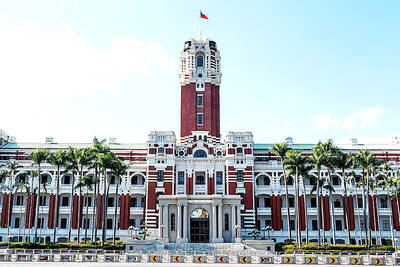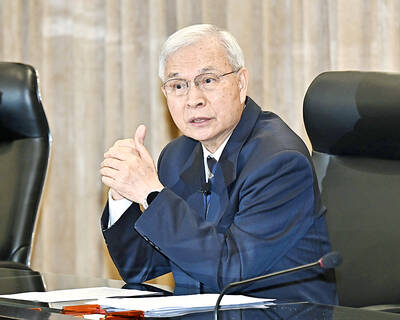With a direct eye on Taiwan, the Chinese military may be moving into the large-scale deployment of unmanned aerial vehicles (UAVs) or drones.
The Associated Press reported over the last few days that Chinese aerospace firms had developed dozens of drones, that its technology was maturing rapidly and that they were “on the cusp” of widespread use for surveillance and combat strikes.
“Taiwan should be concerned about China’s development of large numbers of sophisticated military UAVs,” Ian Easton, a research fellow at The Project 2049 Institute, told the Taipei Times.
Easton, co-author of a recent report on Chinese drones, said there were signs that the Taipei government was taking the situation seriously and “preparing accordingly.”
Intelligence from Taipei on the Chinese UAV fleet indicated that the Military Intelligence Bureau “may have conducted successful operations against China that specifically focused on collecting information about UAVs,” Easton said.
He said that China hides its military aircraft in extensive networks of camouflaged hangers and underground bunkers at virtually every air base across the Taiwan Strait.
Considering that, the bureau could not have gotten its information from satellite imagery and would have had to have used some other measure — “agents on the ground or perhaps cyber espionage,” he said.
Easton said that Chinese UAVs would be deployed in any naval blockade or missile campaign scenario directed against Taiwan.
“They would also support any invasion of Kinmen, Matsu or Dongyin [Isle (東引島)],” he said.
“Given the close proximity of these Taiwanese islands to China, they are probably under Chinese UAV surveillance already, just as the Senkakus [Diaoyutai Islands (釣魚台)] and the Spratly Islands [Nansha Islands, 南沙群島] reportedly are,” Easton said.
The People’s Liberation Army (PLA) Air Force Base near Shuimen Village in China’s Fujian Province, has UAVs stationed there — very close to several of Taiwan’s off-shore islands.
Easton said Taiwan’s main defensive advantages against Chinese UAVs were geography and technology.
“Taiwan has built a remarkable homeland air and missile defense network using its mountainous terrain to protect key facilities and station long-range radars at high elevations,” he said.
“Taiwan’s close relationships with the US military and intelligence community — and Taiwan’s own world-class technology sectors — provide it with some truly cutting edge capabilities for targeting and intercepting attack aircraft, missiles and UAVs,” Easton said.
The key disadvantage for Taiwan was the sheer scope of the Chinese buildup, he said.
“Fortunately, there are very few scenarios in which Taiwan would have to fight alone,” Easton said.
He said he was confident that the US would be there to help and that Japan and others would also support Taiwan.
“Looking ahead, I personally hope that the US and Japan cooperate closely with Taiwan on UAV defense — we have much to learn,” Easton said.
A report published last week by the Carnegie Endowment for International Peace on the future of China’s military and the US-Japan alliance said that recently the tempo of China’s force modernization program had “increased significantly.”
At the same time, China’s Military and the U.S.-Japan Alliance in 2030: A Strategic Net Assessment said that the focus of the modernization had sharpened “largely in response to continued high levels of national economic growth and as a result of specific concerns over increasing US power projection.”
It said there were “growing tensions” with the US and “other regional powers” over Taiwan and maritime territorial issues in the East and South China Seas.
For years Taiwan provided the force-structuring and force-sizing scenario for the PLA, but recently China’s modernization effort had begun to place a greater emphasis on acquiring more ambitious power projection capabilities beyond Taiwan, the report said.
“This military modernization process has created substantial security concerns in the US, Japan and many other countries in Asia, the report said.
Washington’s concern was that the Chinese were developing forces whose primary purpose would be to deny the US military access to the region while the Chinese themselves were projecting power directly onto a “nearby objective,” according to the report.
Such an “anti-access” or “counter-intervention” operation might begin with cyber or physical operations against command-and-control centers and would almost certainly involve UAVs.
“The intent of these actions would be to interfere with American and Japanese intelligence gathering, lengthen the decisionmaking process in Washington and Tokyo and ultimately slow the US military response to events unfolding in the Western Pacific such as a crisis over Taiwan,” the report said.

The CIA has a message for Chinese government officials worried about their place in Chinese President Xi Jinping’s (習近平) government: Come work with us. The agency released two Mandarin-language videos on social media on Thursday inviting disgruntled officials to contact the CIA. The recruitment videos posted on YouTube and X racked up more than 5 million views combined in their first day. The outreach comes as CIA Director John Ratcliffe has vowed to boost the agency’s use of intelligence from human sources and its focus on China, which has recently targeted US officials with its own espionage operations. The videos are “aimed at

STEADFAST FRIEND: The bills encourage increased Taiwan-US engagement and address China’s distortion of UN Resolution 2758 to isolate Taiwan internationally The Presidential Office yesterday thanked the US House of Representatives for unanimously passing two Taiwan-related bills highlighting its solid support for Taiwan’s democracy and global participation, and for deepening bilateral relations. One of the bills, the Taiwan Assurance Implementation Act, requires the US Department of State to periodically review its guidelines for engagement with Taiwan, and report to the US Congress on the guidelines and plans to lift self-imposed limitations on US-Taiwan engagement. The other bill is the Taiwan International Solidarity Act, which clarifies that UN Resolution 2758 does not address the issue of the representation of Taiwan or its people in

US Indo-Pacific Commander Admiral Samuel Paparo on Friday expressed concern over the rate at which China is diversifying its military exercises, the Financial Times (FT) reported on Saturday. “The rates of change on the depth and breadth of their exercises is the one non-linear effect that I’ve seen in the last year that wakes me up at night or keeps me up at night,” Paparo was quoted by FT as saying while attending the annual Sedona Forum at the McCain Institute in Arizona. Paparo also expressed concern over the speed with which China was expanding its military. While the US

SHIFT: Taiwan’s better-than-expected first-quarter GDP and signs of weakness in the US have driven global capital back to emerging markets, the central bank head said The central bank yesterday blamed market speculation for the steep rise in the local currency, and urged exporters and financial institutions to stay calm and stop panic sell-offs to avoid hurting their own profitability. The nation’s top monetary policymaker said that it would step in, if necessary, to maintain order and stability in the foreign exchange market. The remarks came as the NT dollar yesterday closed up NT$0.919 to NT$30.145 against the US dollar in Taipei trading, after rising as high as NT$29.59 in intraday trading. The local currency has surged 5.85 percent against the greenback over the past two sessions, central